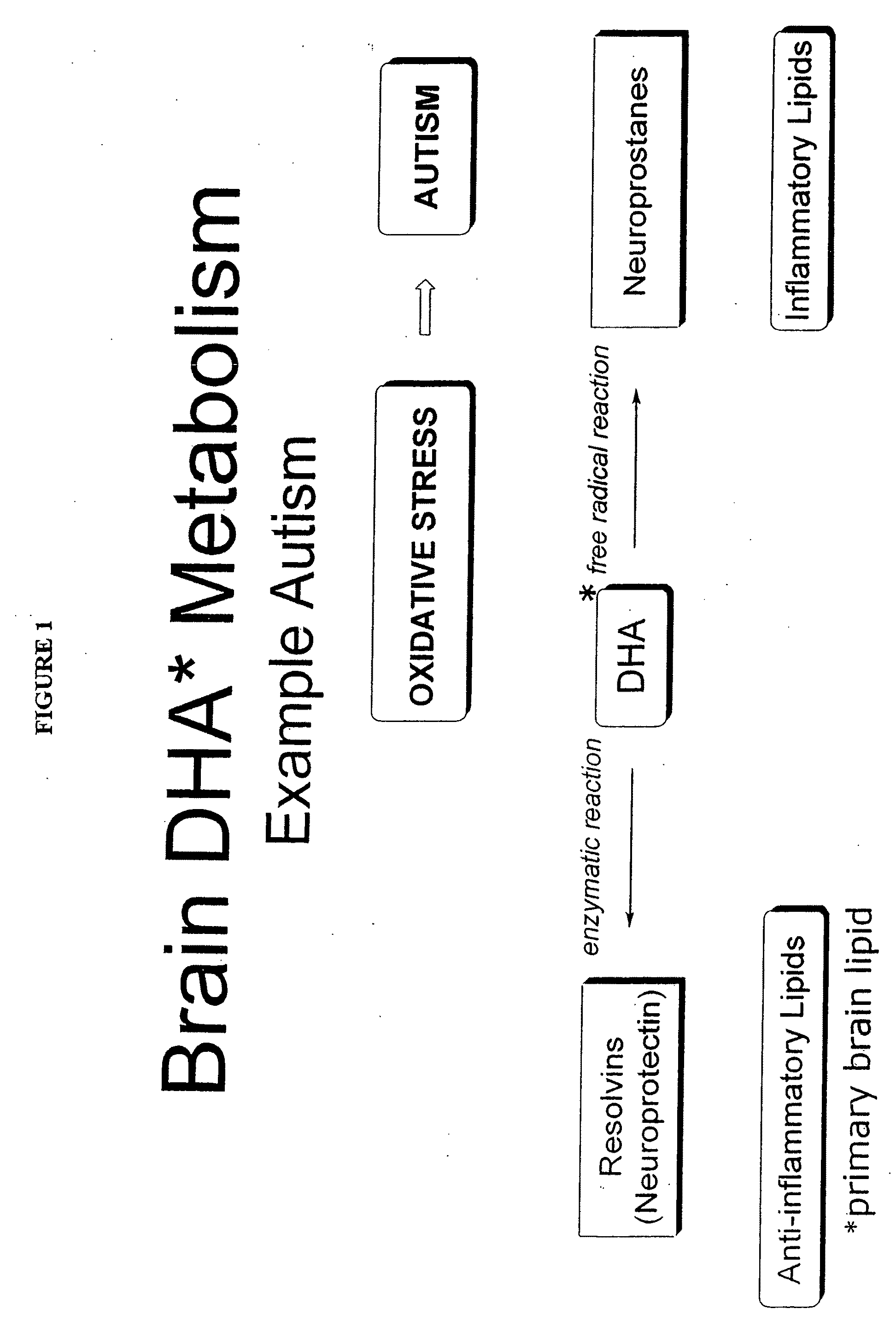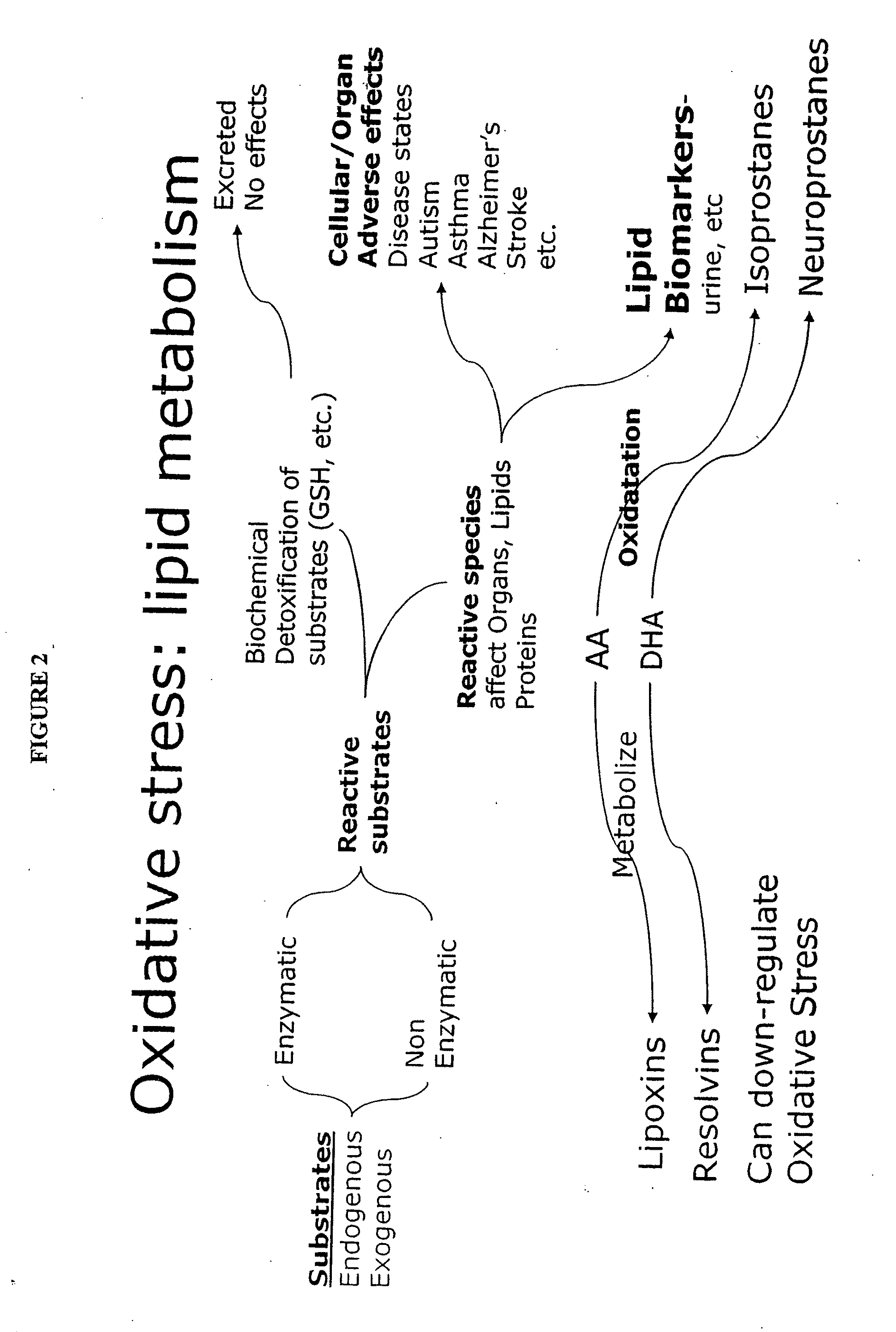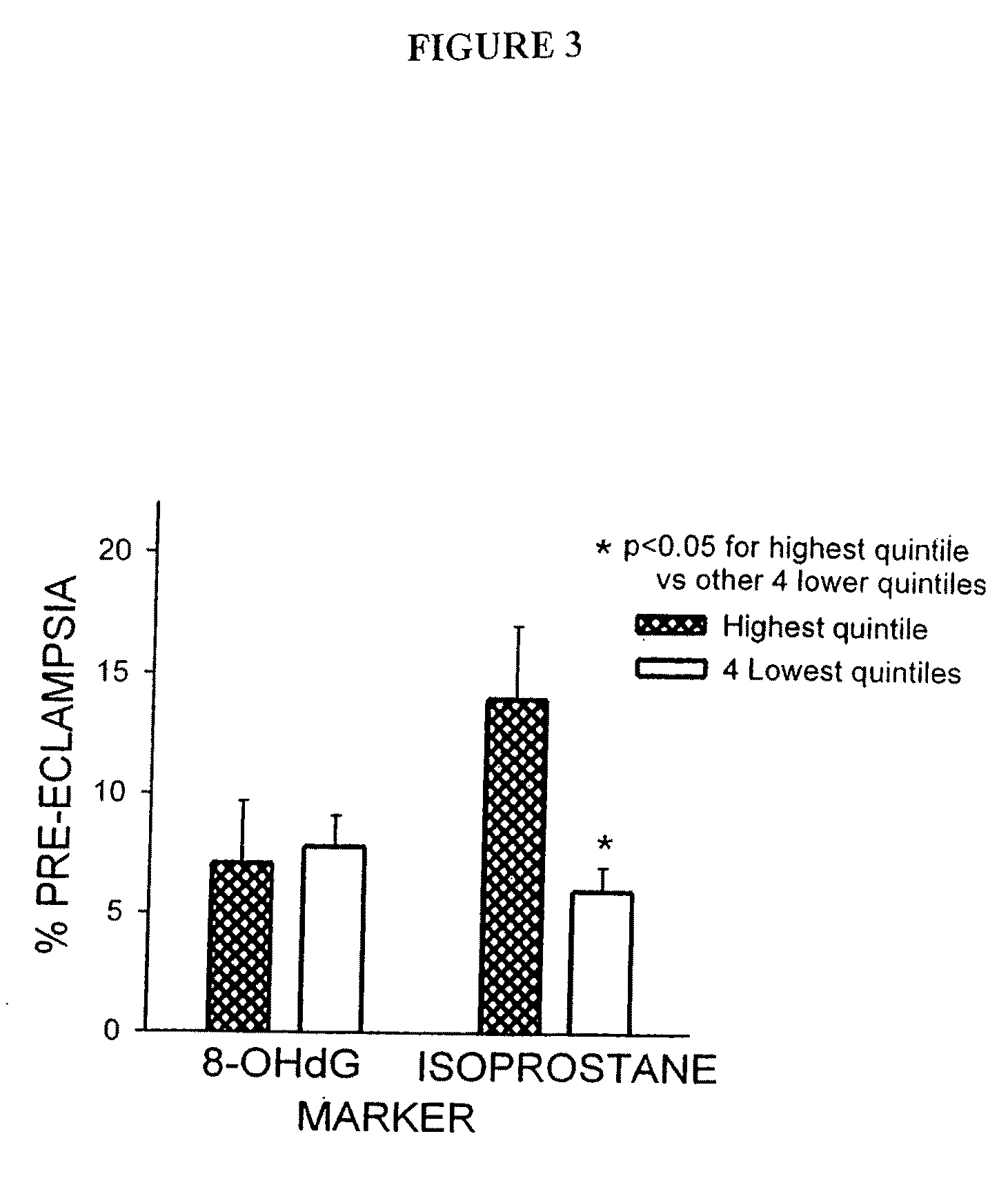Biochemical Markers for Disease States and Genes for Identification of Biochemical Defects
a biochemical and gene technology, applied in the field of disease diagnosis, predicting, monitoring disease, etc., can solve the problems of increasing the risk of or susceptibility to various diseases or conditions, including chronic or acute conditions
- Summary
- Abstract
- Description
- Claims
- Application Information
AI Technical Summary
Problems solved by technology
Method used
Image
Examples
example 1
Association of Candidate Gene SNPs with Autism
[0181]Autism Genetic Resource Exchange (AGRE), a collaborative gene bank for autism, has made available the data from a high density SNP array, the “The Autism Consortium Genome Scan”. This AGRE Affymetrix 5.0 (500K Affy metrix) data was generated at the Broad Institute at MIT and provided to AGRE by Dr. Mark Daly and the Autism Consortium. This scan consisted of 777 families. We gratefully acknowledge the resources provided by the Autism Genetic Resource Exchange (AGRE) Consortium and the participating AGRE families. The Autism Genetic Resource Exchange is a program of Autism Speaks and is supported, in part, by grant 1U24 MH081810 from the National Institute of Mental Health to Clara M. Lajonchere (PI).
[0182]We performed a sib-TDT analysis of the AGRE 500K chip for SNPs within our chosen genes using the dfam function of the PLINK package (PLINK v1.00), a tool set for whole-genome associate and population-based linkage analysis (Purcell...
example 2
Correlation of GSTM1*0 Genotype with Isoprostane Excretion in Autism
[0183]Because glutathione stransferase M1 (GSTM1) contributes to lowering oxidative stress, the GSTM1*0 allele, a null deletion mutant, is predicted to increase oxidative stress. We have identified GSTM1*0 null deletion as associated with an increased prevalence of autism (Buyske, S. et al BMC Genet (2006) 7:8, and U.S. Patent Application 60 / 900,573, incorporated herein by reference). Since we previously associated GSTM1*0 with autism it is reasonable to expect that, among individuals with autism, GSTM1*0 homozygotes will have increased oxidative stress compared with non-homozygotes. We have also found increased urinary excretion in autism of an oxidative stress biomarker, isoprostane (Ming, X. et al (2005) Prostaglandins, Leukotrienes and Essential Fatty Acids 73:379-384). Therefore, a reasonable hypothesis is that among individuals with autism, GSTM1*0 homozygotes will excrete larger amounts of isoprostane in thei...
PUM
| Property | Measurement | Unit |
|---|---|---|
| temperature | aaaaa | aaaaa |
| Tm | aaaaa | aaaaa |
| pH | aaaaa | aaaaa |
Abstract
Description
Claims
Application Information
 Login to View More
Login to View More - R&D
- Intellectual Property
- Life Sciences
- Materials
- Tech Scout
- Unparalleled Data Quality
- Higher Quality Content
- 60% Fewer Hallucinations
Browse by: Latest US Patents, China's latest patents, Technical Efficacy Thesaurus, Application Domain, Technology Topic, Popular Technical Reports.
© 2025 PatSnap. All rights reserved.Legal|Privacy policy|Modern Slavery Act Transparency Statement|Sitemap|About US| Contact US: help@patsnap.com



